An Interview with Steve Scanlon
Rob Giles
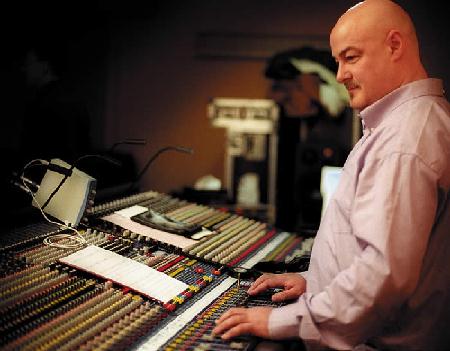
Rob Giles

One of the most rewarding perks of reviewing for a site like MichaelD's is our wide exposure, which sometimes leads to valuable feedback from people within the industry. After writing my review of the recent Rainbow DVD, Live In Munich, I received an email from Steve Scanlon; the man responsible for the fantastic audio on this and many other DVDs. Steve was kind enough to agree to an interview in which he discusses the technical side of his role, shares some of the tricks of the trade, and as a particularly nice treat, reveals a few upcoming titles that he has been working on.
Rob Giles: Is Live In Munich your
first DVD project? What other titles have you been involved with to date?
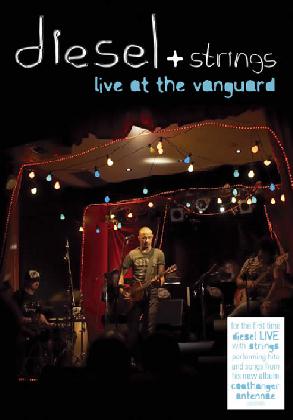 Steve Scanlon: Some of my past work includes;
Mental As Anything Live at the Basement, Living Loud,
Diesel Live at the Metro, Diesel Live at the Vanguard,
Dixie Dreggs, Mark Holden, Deep Purple's California Jam
DVD, Deep Purple Live in Concert 72/73 and many others.
Steve Scanlon: Some of my past work includes;
Mental As Anything Live at the Basement, Living Loud,
Diesel Live at the Metro, Diesel Live at the Vanguard,
Dixie Dreggs, Mark Holden, Deep Purple's California Jam
DVD, Deep Purple Live in Concert 72/73 and many others.
RG: Do you work solely on DVD soundtracks like this?
What other work does your Melbourne studio handle? Any feature film soundtracks
or bands we might recognise?
SS: I Produce, Engineer, Mix and Master current
charting DVDs and CDs in my studio. Artists such as Australian Idol,
Shannon Noll, Guy Sebastian, Joel Turner, Tina
Arena, Vanessa Amorosi, Kate Ceberano,
Ian Gillan,
Rene Geyer, Glenn Hughes, Bob Daisley, Andy Van and
others. Currently, I am mixing
Ian Gillan's
new 2006 Live in LA DVD and Richie Blackmore's 2006
Live in Paris DVD.
RG: Wow! A lot of fans will be looking forward to
those. Your details were featured in the Rainbow DVD booklet, which is a
great credit to you. What kind of feedback have you received since the DVD's
release?
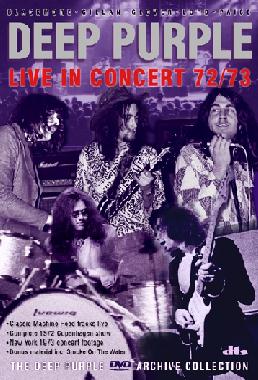 SS: Thanks! I do get emails from
Deep Purple
fans all over the world, congratulating me every now and then. It's very nice of
them.
SS: Thanks! I do get emails from
Deep Purple
fans all over the world, congratulating me every now and then. It's very nice of
them.
RG: How did you come to get this job? Were you
approached by the band management, or was it the label?
SS: Both the band's management and the label.
RG: I noticed your credits also include the excellent
California Jam DVD. I saw Glenn Hughes perform an acoustic
show at The Basement in Sydney in June last year and he was absolutely
amazing. Are you a Rainbow/Dio/Deep
Purple fan?
SS: Thanks! Yes, I am a
Deep Purple
fan, I grew up on all of it! I was recently production manager and engineer for
Glenn's live shows in Australia. We spent a few days in the studio working on
the tracks we recorded at The Basement for his live DVD. I have just
finished mixing it and it's fantastic! Acoustic, with strings, etc.
RG: If the DVD captures even a fraction of the magic
in Glenn's acoustic show, it should be awesome! There have been some great
examples of audio restoration around in recent years. I've been impressed with
Kevin Shirley's work with the
Led Zeppelin
DVD and the
Page & Plant
DVD. What are some of your personal favourite DVD soundtracks?
SS: Yes, Kevin did a great job! I enjoyed Diana
Krall Live in Paris. There are so many. It's still such a new art form,
I remember speaking with Peter Gabriel at length many years ago in
Monaco, where he tried to explain to me how he was doing his first DVD.
'What's a DVD?', I asked!
RG: What archive sources were you provided with for
the Rainbow DVD? Did you start with the old analogue master or were you
just provided with a couple of Pro Tools stems? What condition were the
original analogue masters in?
SS: I get different formats, such as DAT or data
versions provided in digital form. I then transfer these to Pro Tools.
They can be out of sync or noisy or rumbling. You get what you get and you work
like mad to throw everything at it 'till it gels, or sometimes I do very little.
I always A/B (compare) with the raw audio to ensure I am adding a good thing and
not taking anything away from the original.
RG: The original Rockpalast program was
recorded for TV broadcast in 1977. Were there any faults in the original
recording that you had to overcome? Do you think it was a quality recording,
considering the technology of the day?
SS: I thought it was OK, my only concern is always
balance then sub bass. I don't usually convert old recordings to 5.1 for this
reason, because no-one really addressed the subsonics when they mixed these type
of recordings 'live' back then. No matter what I try to do, 5.1 just doesn't
sound great and I'd prefer not to add the rumble to your home experience if it
isn't part of the music. Most systems will fold the low bass from the other
sends into your sub if it's setup that way.
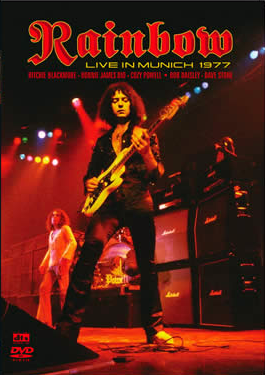 RG: I must say, one of my DVD pet hates is lacklustre
surround audio derived from a 2-channel source. In my review of
Rainbow
Live In Munich I mention that if it weren't stated clearly in the
booklet as 'surround sourced from stereo', I wouldn't have known any better! Is
this the kind of reaction you were after? How did you approach the remastering
task? Do you personally prefer highly active surround mixes?
RG: I must say, one of my DVD pet hates is lacklustre
surround audio derived from a 2-channel source. In my review of
Rainbow
Live In Munich I mention that if it weren't stated clearly in the
booklet as 'surround sourced from stereo', I wouldn't have known any better! Is
this the kind of reaction you were after? How did you approach the remastering
task? Do you personally prefer highly active surround mixes?
SS: I only hope that people like what I do. Everyone
has their system set up differently, so I am trying to be conservative and
aggressive at the same time. I am a live sound engineer, so I just look for as
'real' a feeling of surround as I can get, in order to fit with the pictures.
RG: Were you given any guidance (or pressure) as to
the direction of the mix, or were you given free reign to produce a mix you
liked?
SS: I am given free reign until I find "the bubble"
where I'm happy. Then the artist, label or management drop by for a listen, or I
do copies for their perusal or comments. It takes many listens from other
perspectives to ensure the final process is as good as I can deliver.
RG: The surround mixes differ greatly from the stereo
soundtrack, particularly in depth and presence. Has the stereo audio undergone
any manipulation?
SS: Yes, I have mastered the stereo mix as well, but I
am a little more conservative with the stereo as there are many fans who like to
know what it really was like without too much being added. I even get
requests for mono, which is fair enough. The 5.0 format allows me to just go for
it. I am able to manipulate frequencies from speaker to speaker, from the same
stereo source, as well as create a room/live dimension to the speakers
independently. That's it. I then compress, EQ and gate the audio to enhance the
dynamic range without squashing the life from it, adjusting the previous
parameters as I go.
RG: Was it a laborious job to create the restored
surround mix, or is it a simple process of panning and EQ tweaking? How long did
the job take?
SS: It's never laborious :-) Just a lot of
double-checking of my senses with other material and looking deep into my bag of
tricks to find "the bubble" or sweet spot.
RG: What are the steps involved in the restoration,
once you receive the master?
SS: First, I transfer the source to Pro Tools,
then I listen to the audio without any video accompaniment. I find I am more
pleased with the audio if I'm looking at the video, so I avoid that at first. I
find the correct bass, midrange and top end frequencies, then check the dynamic
of the overall files by clicking forward towards the end. A lot of these types
of mixes change very significantly from the start to the end. I then make check
points throughout where things change, be it EQ, dynamics or balance, and try to
find the 'overall sound'. Once I become clear what that is, I automate fix-ups
along the path with EQ, compression, etc. Many, many listens later I start to
watch for audio blemishes and repair or clone areas as needed. Sometimes the
recording goes out of sync, which is always a nightmare and very, very time
consuming to keep on track/in sync.
RG: To what extent were you involved with the
authoring? Did you perform the dts encoding yourself?
SS: No, I don't do the encoding, although I must say
it's still a very black art in itself. I still haven't heard exactly the same
sound come back. It appears dts is always the closest. HD-DVD will be
interesting, I'm sure.
RG: I haven't seen the Japanese (Region 2, NTSC)
2-disc version, which was released quite some time before ours. Is the audio mix
the same as the Region 4, done by you?
SS: Not that I know of, but I never always know
exactly where some of my work ends up!
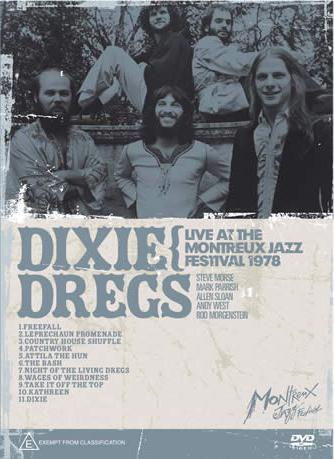 RG: Finally, are there are any bands or DVDs already
in the marketplace that you wish you could have a go at? Some of the old
Black Sabbath
stuff deserves this kind of treatment in my opinion.
RG: Finally, are there are any bands or DVDs already
in the marketplace that you wish you could have a go at? Some of the old
Black Sabbath
stuff deserves this kind of treatment in my opinion.
SS: Absolutely! I love this kind of work, bringing the
early mixes into the modern audio spectrum and re-living the fantastic energy of
these great acts,
massaging them closer to their true form as they played it live at the time.
Bring it on! :-)
Steve Scanlon's personal web page can be found
here. Be sure to check it out, and
look out for those great music DVDs on the way in 2007!
A huge thank you goes out to Steve for taking the time to
answer my questions. If only I could manage a mighty Ian Gillan scream,
that would be ideal. Aw, why not: EeeeeeEEEeeeEEOOOOooooWWww!!!! Ah, that feels
better.